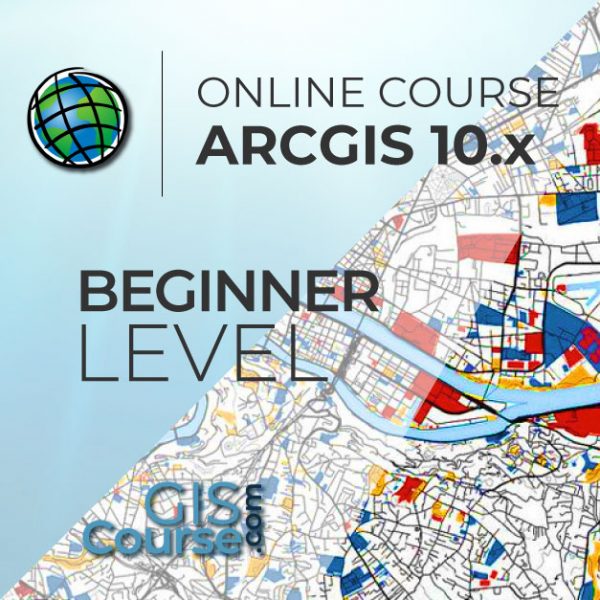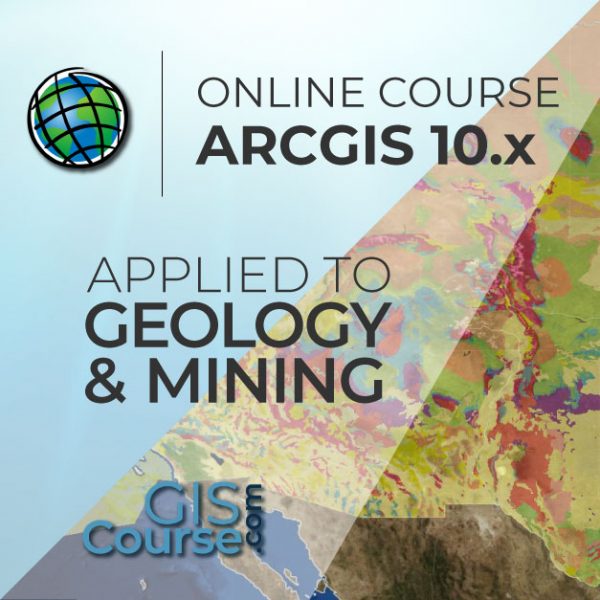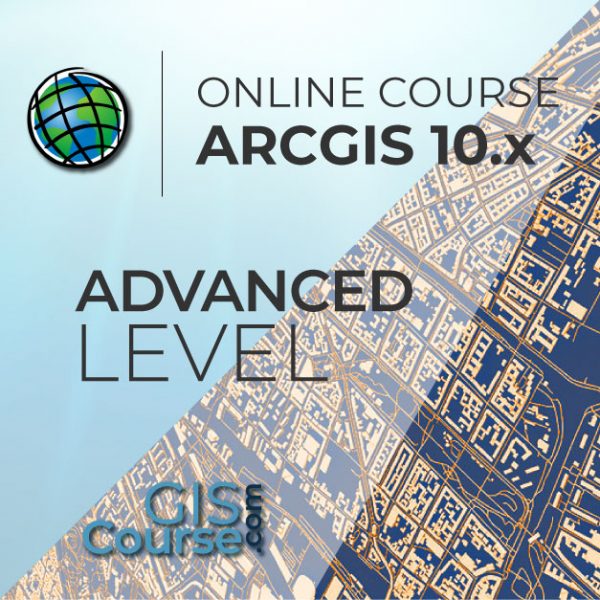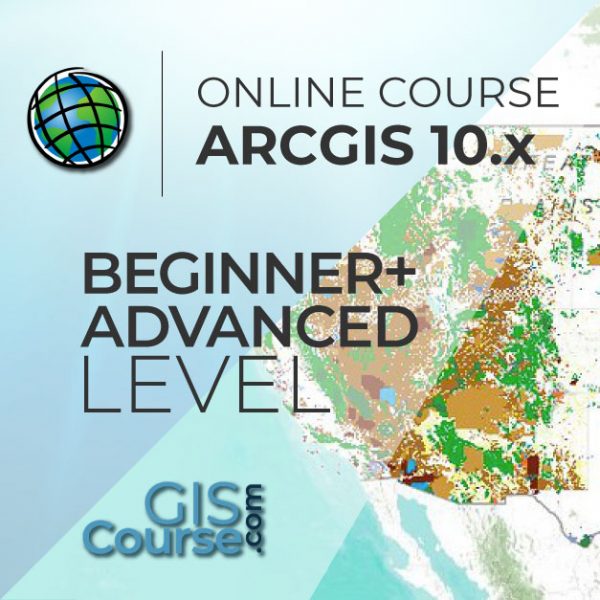USING PYTHON WITH ARCGIS (ADVANCED LEVEL)
ONLINE TRAINING
START DATE: AVAILABLE SOON (80 hours)
PRICE: 250 € (Standard fee) | 225 € (Student / Unemployed fee)
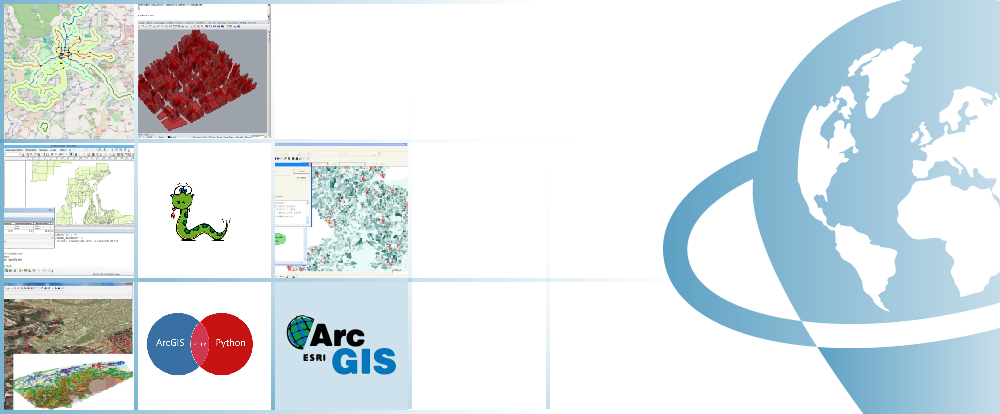
The course will train students in the advanced use of Python programming language along with ArcGIS Desktop collection software on: process and tasks automation, vector and raster analysis, map generation and publication, geoprocessing model creation, etc.
The student will be trained in the advanced use of Python programming language, will learn how to create Add-ins or how to build custom UI tools for ArcGIS (ArcMap). Advanced vector and raster analysis using Python will also be included in the training process.
Enrolled students in this online course will have access to our virtual e-learning platform (which is available 24 hours), where they will find the content of the course, practical exercises, forum discussion and additional content. One of the advantages of this online platform, is that students can benefit of real time support and assistance offered by the instructor (2 hours per week), whom they can contact via direct messages, regarding course related issues, at any moment. They can also contact the instructor via email.
- Learn how to build custom UI (user interfaces) for ArcMap using Python Add-ins.
- Familiarize with the ArcPy objects and libraries in order to perform complex spatial analysis.
- Gain knowledge about spatial data management using integrated ArcPy libraries.
1 - THE DATA ACCESS MODULE, ARCPY.DA
- What is the data access module?
- Accessing data using cursors
- Edit sessions
- Work with versions, domains and subtypes
2 - CREATING CUSTOM TOOLS FOR ARCGIS WITH PYTHON SCRIPTING
- First steps to create a Python script tool
- Progress messages
- Write messages in script tools
- Understanding Progressor in script tools
- Progressor functions and capabilities
3 - DEVELOP ADD-INS FOR ARCGIS DESKTOP WITH PYTHON
- Introduction to Add-In
- Creating a Python Add-In tool
- Share and install Add-Ins
- Editing Add-Ins
- Python Miscellaneous Topics
4 - CREATE GRAPHICS WITH ARCPY
- Introduction
- Graph
- Graph proprieties
- Graph methods
- Make Graph
- GraphTemplate
- Exporting a graph to a native format
- Save Graph
5 - CONVERT GEOJSON OBJECTS TO GEOMETRY
- What is the GeoJSON format?
- GeoJSON code example
- Converting geometries between GeoJSON and ArcPy objects
6 - ADVANCED TOOLS
- Introduction
- FieldMappings processes
- Proprieties and methods of FieldMappings object
- The FieldMappings object
- Working with multivalue inputs
- Working with feature sets and record sets
- Create and use RecordSet/FeatureSet objects
- Create RecordSet/FeatureSet from input tools
- How to get results from a geoprocessing server tool
7 - USING CUSTOM TOOLBOXES
- Importance of custom geoprocessing tools
- Use a custom geoprocessing tool
- ArcGIS Server toolboxes
- Geoprocessing tasks with Python scripts
8 - MANAGE ARCSDE GEODATABASES WITH PYTHON
- Introduction
- Validate table names
- Validate field names
- How to parse table and field names
- Using SQL with ArcSDE
- Transactions with ArcSDESQLExecute
- Workflow Transactions
9 - INTRODUCTION TO RASTER ANALYSIS WITH SPATIAL ANALYST MODULE OF ARCPY
- Introduction to Spatial Analyst module of ArcPy
- Raster – ArcPy Classes
- Working with Raster Objects – overview of Map Algebra
- Raster Dataset properties
- Raster Methods
- An overview of Spatial Analyst classes
- An overview of neighborhood classes


Alberto Santos Estévez
Consultant and Geospatial Developer with more than 15 years’ experience in GIS integrated solutions and high performance systems.
Chencho Martín Lagunas
GIS Developer with extensive experience in Full-Stack software development, specialized in GIS data analysis and pre-processing using Python.
Why starting to study ArcGIS 10.x?
The usage of Geographic Information Systems (GIS) is rapidly growing, becoming an essential tool in a variety of business sectors like engineering, environment, geography, mining or geomarketing.
Among GIS tools, ArcGIS is one of the most used GIS software worldwide, the most stable and versatile, comprised by a set of integrated applications, with a solid documentation over a wide range of tools being also supported by a large community.
ArcGIS provides contextual tools for data visualization, mapping and spatial analysis, connecting and combining information from varied sources (local and online), offering complex capabilities in order to explore, gain and enquire knowledge, that will lead to the best decisions. It can be also handled using a user interface as well as in command line using specific programming languages, like Python.
Do I need previous knowledge in ArcGIS 10.X?
Yes, for undertaking this course you will need previous Geographical Informational Systems training and knowledge.
I do not have ArcGIS 10.x software. What can I do?
ESRI (creators of the ArcGIS program) provides a free trial license for a 2 month. You only need to create an account, download the program and follow the installation steps (see the website). However, we will assist you in any problem you may encounter.
Our online courses, are distributed via Moodle, the world’s most popular learning platform. It is a highly flexible Learning Management System that can be used to conduct and access courses, accomplish tasks of practical exercises, interact face-to-face to the teaching staff or benefit of support and resources at any time.
The online platform can be accessed 24 hours a day, in which the student will be able to ask for help at any given moment. The instructors will act as supervisors during all the training process, offering support for any possible difficulty encountered by the students along the course.
The course is structured in different modules, making it easy for the student to search for training material, download information, complete practical exercises and take assessments in order to verify their new gained abilities. The instructors will assist the students throughout all the course period, offering progressive help and information according to their evolution.
250 € (Standard fee) / 225 € (Student / Unemployed fee)*
*To enjoy this discount, you must include a copy of a document that proves your situation along with the registration form.
** If you want to know the price in other currencies, you can consult the following online converter: The Money Converter

Step 1. Request your registration to the training course completing the pre-registration document (Registration Form) and send it via email to training@tycgis.com.

Step 2. As soon as we receive it, we will send you an enrolment guide with the complete information to enroll in the course: dates, schedule, software needed for the course and the installation guide. The payment methods are included in this document.

Step 4. Once we receive the receipt, we will confirm your registration to the course via email.

NATIONAL WIRE TRANSFERS (INSIDE SPAIN):
ACCOUNT NUMBER: 0049 1809 222710347481 (Banco Santander)
BENEFICIARY: TYC GIS Soluciones Integrales SL
SUBJECT: “Student Name” and ARCPY II COURSE ON
INTERNATIONAL WIRE TRANSFERS:
BANK NAME: Banco Santander
BANK ADDRESS: Glorieta Ruiz Jiménez 1, 28015 Madrid (España).
BENEFICIARY: TYC GIS Soluciones Integrales SL
BENEFICIARY ADDRESS: Calle Fuencarral 158, Entreplanta, Oficina 16-17 28010 Madrid (España).
ACCOUNT NUMBER: ES90 0049 1809 222710347481
SWIFHT: BSCHESMM – IBAN: ES90
If you have payment difficulties, contact us





 (21 votes, average: 4.81 de 5)
(21 votes, average: 4.81 de 5)